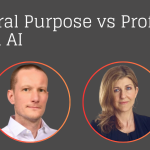 Effective data classification helps law firms to not only protect the integrity of client data but also demonstrate best practice in data security, says Thomas Fischer (pictured), threat researcher and global security advocate for Digital Guardian, who here sets out a five-point action plan.
Effective data classification helps law firms to not only protect the integrity of client data but also demonstrate best practice in data security, says Thomas Fischer (pictured), threat researcher and global security advocate for Digital Guardian, who here sets out a five-point action plan.
For a law firm, a data breach can have far reaching ramifications, potentially affecting the outcome of cases and/or causing irreparable reputational damage to both the firm and its clients. But with recent research by PwC finding that over 60% of law firms have suffered some form of cyber security incident in the last year, the threat faced by the industry is clear and present. In fact, one in eight firms claim to be victims of cyber attacks such as phishing and malware on a daily basis, with a further 30% identifying attacks on either a weekly or monthly basis.
This increasing threat level means it’s more important than ever to have tried and tested data security strategies in place, but with such a high volumes of data coming in and out of most firms every day, how can the highest priority data be quickly identified and protected? After all, security costs time and money, and not all types of data are as sensitive or vulnerable as others.
It’s for this very reason that data discovery and classification techniques are making a significant resurgence. Indeed, global analyst houses Forrester and Gartner both claim data classification is now foundational to any effective data security strategy.
What is data classification?
Data classification is a process of consistently categorising data based on specific and pre-defined criteria so that it can be efficiently and effectively protected. In addition to simplifying security strategies, it can greatly assist law firms by reducing risk and ensuring compliance with codes of conduct and industry regulations.
A data classification solution can also offer clients a greater level of confidence in the integrity of their confidential information and support a proactive approach to preventing conflicts of interest by ensuring that client data remains cleanly segregated at all times.
How can law firms implement an effective classification strategy?
Data classification is not a one size fits all approach. Every firm has different needs to address, so a strategy must be tailored accordingly. However, the following five-point action plan can be used to create the foundation of an effective strategy:
1) Clearly define a data classification policy
It is best to start by establishing what the goals, objectives and strategic intent of the policy are. Make sure all relevant employees are aware and understand why it’s being put in place. An effective data policy must also balance the confidentiality and privacy of employees/users against the integrity and availability of the data being protected. A policy that’s too stringent can alienate staff and impede their ability to carry out their jobs, but if it’s too lax, the very data the firm is trying to protect could be at risk.
2) Establish the scope
It’s important to establish where the boundaries will be early on; otherwise it can quickly grow out of control. This is particularly important when considering partners and third parties. How far into their network, will/can you reach? Equally important is legacy and archived data. Where is it and how will it be protected? Finally, make sure to note anything that’s out of scope and ensure this is evaluated and adjusted regularly.
3) ‘Discover’ all sensitive data defined in the agreed scope
Once data policy and scope have been established, the next task is to identify all the sensitive data that requires classification and protection. First, understand what data is being looking for. This could take many forms, ranging from confidential case files and personally identifiable information, through to client IP, source code, proprietary formulas etc. Next, focus on where this data is likely to be found, from endpoints and servers, to on-site databases and in the cloud. Remember that discovery is not a one time event, it should be continuously re-evaluated, taking into account data at rest, data in motion and data in use across all platforms.
4) Evaluate all appropriate solutions
When the time comes to identifying an appropriate data classification solution, there are plenty to choose from. Many of the best solutions today are automated and classification can be context (file type, location etc) and/or content based (fingerprint, RegEx etc). This option can be expensive and require a high degree of fine tuning, but once up and running it is extremely fast and classification can be repeated as often as desired. An alternative to automated solutions is a manual approach, which allows users themselves to choose the classification of a file. This approach relies on a data expert to lead the classification process and can be time intensive, but in law firms where the correct classification is intricate and/or subjective, a manual approach can often be preferable.
A final option is to outsource the classification process to a service provider or consulting firm. This approach is rarely the most efficient or cost effective, but can provide a one-time classification of data and give any firm a good idea of where it stands in terms of compliance and risk.
5) Ensure feedback mechanisms are in place
The final stage is to ensure there are effective feedback mechanisms in place that allow swift reporting both up and down the firm’s hierarchy. As part of this, data flow should be analysed regularly to ensure classified data isn’t moving in unauthorised ways or resting in places it shouldn’t be. Any issues or discrepancies should be immediately flagged for follow up.
With data now playing a pivotal role in nearly every law firm around the world, the ability to track, classify and protect it is critical. An effective data classification strategy should form the cornerstone of any modern security initiative, allowing firms to quickly identify the data most valuable to them and their clients, and ensure it is safe at all times.
Legal IT Insider is unique in the legal technology press for not carrying paid for advertorials. If you are a thought leader and wish to comment on an issue of relevance to the legal technology industry please contact [email protected]







